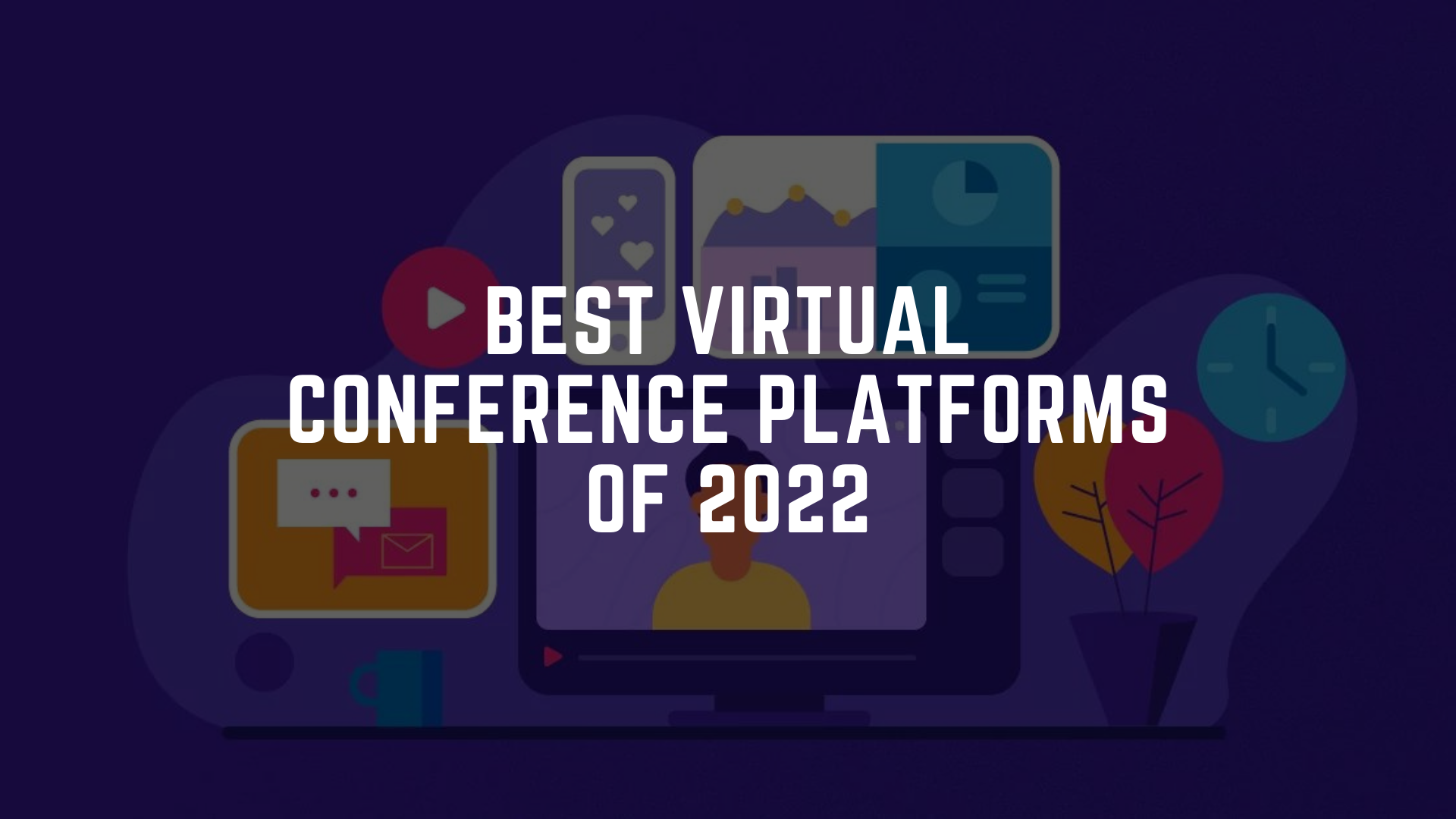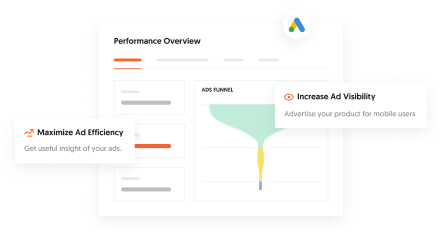
Hope you're enjoying this post! If you'd like me to handle your marketing—
Book a callAuthor:
Khalid Hossen
Founder of VentCube, SEO and Strategic Digital Marketing Expert
Last Update:
08-19-2023

Selecting the correct virtual conference platforms is critical to provide your audience with the required knowledge. The best virtual conferencing platforms can help you achieve your objectives, providing excellent training or advertising your company. I selected and reviewed the 16 finest virtual conferencing platforms in this article so you can choose the right one for you.
So, how did we decide which virtual conferencing software was the best? We based our decision on three key factors:
However, this was merely the beginning of our investigation. Following that, we asked several more in-depth questions, including:
These nominees for the best virtual conference platform in 2023 came after further narrowing down the list of established and new virtual conference platforms.
In alphabetical order, they mentioned below.
Zoho Meeting is a web-based virtual event platform for collaboration that provides engaging, personalized audio and video conferencing and webinars, all from a single platform. Meetings are secure, including audio and video recordings, and hosts have control over who can record activities to protect proprietary information. Zoho Meeting offers a simple, user-friendly layout and is one of the most cost-effective solutions (it even has a free forever plan with many features!).
It’s perfect for SMBs communicating with internal or remote teams, clients, and contractors. It’s also an excellent choice for people who give webinars and short online courses.
In addition to excellent security and moderation capabilities, Zoho Meeting includes valuable features such as embedded form and email invitation customization to reflect your branding, interactive polls, Q&As, hand raising, and a ‘allow to speak’ part that includes the recording of that attendee or presenter’s voice in the meeting recording.
Attendance, webinar registrations, interaction, polls, and Q&As all be tracked using Zoho Meeting. Reports are available in two formats: XLS and CSV. Overall, Zoho Meetings is a fantastic solution that is very secure and provides everything you require at an affordable price.
the summit is a comprehensive event management tool that makes knowledge available to everyone. Summit promotes a knowledge-sharing economy regardless of who you are or where you reside. This allows people, corporations, and organizations to reach a global audience with their material, ideas, and experiences.
The built-in features of HeySummit make putting on a great event a breeze. They allow event organizers to manage all parts of event management, including developing landing pages to publicize the event, onboarding speakers, selling tickets, collecting feedback from attendees, and administering the event.
Each program can be tailored to provide attendees with the most excellent possible experience. HeySummit allows event planners to easily weave together numerous sessions inside a single event, resulting in something interesting, intelligent, and meaningful for its attendees.
Various types of sessions, such as a panel discussion, workshop, or Q&A, necessitate a variety of formats and approaches, ranging from live-streaming to networking.
Summit provides several tools that you can use individually or in combination. The platform also uses connectors, like google meet and Hopin, to operate with your current tools. As a result, there’s no need to reinvent the wheel or learn new systems – plug it in and start using it!
BigMarker is popular among event planners since it provides browser-based, no-download webinar software. It’s an excellent choice for people who want to make, distribute, and monetize live, on-demand, and automated video content.
Users may host their material on their all-in-one virtual event platform or utilize its embed capability to add interactive features like lead forms, surveys, offers, and Q&As.
Furthermore, BigMarker’s webinar software allows you to broadcast your event across numerous platforms without additional coding or preparation.
Hopin is a virtual venue with various interactive spaces designed to help people connect and engage. Attendees can move in and out of rooms like at an in-person event.
Hopin’s platform simulates the atmosphere of an in-person event on a virtual platform, promising high show-up rates, low drop-off rates, and pleased participants.
Attendees and presenters can roam an exhibition floor while meeting and networking with others, dipping in and out of keynote lectures, and talking and participating in general, just like they would at a trade fair or exhibition hall.
Its easy-to-use backend is ideal for first-time event planners and people with modest coding knowledge. In minutes, you can create a primary event in just three easy steps: enter the event details, make the schedule, and go live!
Event organizers may construct their event registration flow, use Hopin’s email marketing capabilities, and incorporate customized branding across all stages of the event experience, thanks to the platform’s easy configuration of all event management features.
fairs is an events platform that allows event organizers to design and administer online conferences, trade exhibits, job fairs, etc. It is modeled after the exposition hall concept. Fairs are the go-to tool for virtual and hybrid events, offering many features and connectors. It can organize live and semi-live webinars and unique 3D designs, resulting in a fascinating, unforgettable experience for attendees, speakers, and sponsors.
It’s also simple to use (no one likes overly sophisticated technology that discourages and frustrates audiences), so attendees at your event can access content with little or no guidance. Users can easily read content, network with exhibitors or peers, and attend live webinars in immersive, vibrant settings.
We also like how you can make your exhibition hall more inclusive by selecting from various avatar sets that represent diverse nationalities, ethnicities, and abilities.
Remo offers simple, face-to-face interactions similar to those found in real life. Its top-down visual view and 2D map, comprised of dynamic “rooms,” make this possible. Remo utilizes video, audio, and chat to naturally allow people in space to engage in real-time from anywhere on the planet.
Remo is unique because it lets people join group networking through “tables.” Each platform floor includes 19 tables, each with six seats, allowing up to six people to network. The table model allows for closer and more concentrated interactions while offering enough space for everyone. For groups of 100 or more people, additional floors are built.
Remo is ideal for anyone searching for an immersive virtual venue for events since it places actual human connection at the center of our platform. Event organizers can customize the room and table names, but attendees can choose who they connect with in real-time by joining a table.
When it’s time for the speakers to make their presentations, the networking pauses, and everyone can watch and engage in the production or discussion.
Vimeo is an all-in-one video hosting and sharing platform. Vimeo’s 200 million+ global users appreciate how simple it is to embed a video on your website, blog, or anyplace else on the internet without writing a single line of code.
It is well-known as a video hosting service with the most stable, fast-loading, and ad-free HDR player. Vimeo transmits its films in full HD with adaptive streaming as a live streaming platform, ensuring the best possible viewing experience across devices – even in low-bandwidth areas.
When an event concludes, it is automatically preserved in up to 4K resolution, ready to be shared, embedded, and rewatched indefinitely.
Twitch is famous live-streaming website gamers use to broadcast their gameplay while interacting with millions of fans worldwide.
Since its launch, Twitch has teamed with game businesses such as Blizzard Entertainment and the Overwatch League to provide unique global gaming and esports events.
Despite this, it is rapidly becoming the go-to site for live-streaming content to a big audience – the UK government uses the platform to live-stream regular press briefings on COVID-19.
The event’s dynamic nature encourages audience participation and interaction. Twitch sets itself apart from other live-streaming platforms by providing a shared experience. Instead of a passive, one-way presentation, the audience is treated to a two-way (often more) dialogue.
Live streaming is a fantastic way to engage with your audience and generate buzz for your brand, especially if you have a young target demographic (users aged 20-29 account for over 40% of Twitch’s user base). It’s a priority for 56 percent of brands surveyed, and 40 percent of consumers want to see more live videos from brands.
These days, Facebook is constantly one step ahead of the curve, and live streaming is no exception. You can go live on Facebook as an event organizer to broadcast a chat, performance, or series of talks.
Your live videos will appear in people’s News Feeds if you go live on a page, in a group, or at an event.
SpotMe is a platform that provides immersive digital experiences in addition to conducting virtual events. Users adore its online and mobile-friendly layout and various customizable capabilities, allowing event organizers to offer live and on-demand content.
This platform offers built-in capabilities to guarantee that the focus is on boosting the attendee experience, from breakout sessions to gamification. One of the unique ways is through its ‘Activity Feed’ feature, which allows speakers, hosts, and attendees to write posts, share images, videos, and comments, and participate in threaded discussions, quickly transforming an audience into a collaborative digital community.
With 2.8 billion monthly active users, you’ll get access to one of the world’s largest online audiences on a platform that many people use daily. Facebook claims that one of every five films uploaded to the network is via Facebook Live and that consumers watch a video three times longer when it’s live.
Going live on Facebook allows your audience to interact with you, your brand, or your company more engagingly, with viewers able to comment and think about your videos just like they would on a standard Facebook post. You may also be reactive, making it a popular site for Q&As.
Zoom has become one of the most popular video event platforms since its introduction in 2013. This is popular since it can handle professional meetings and casual get-togethers among friends.
It’s desktop client is simple to use and navigate, and the software has many valuable features. HD video and voice, screen sharing in real-time, MP4 or M4A recording, keyboard and mouse control, whiteboarding, and even breakout rooms. The Zoom smartphone app is also handy for on-the-go meetings. It’s also relatively safe, employing a secure socket layer (SSL) and AES 256-bit encryption.
The platform’s free subscription is generous, allowing users to host up to 100 people on a video call that is limited to 40 minutes and includes all video conferencing, web conferencing, and group collaboration tools. Users will, after that, be required to subscribe to a premium subscription.
Microsoft Teams, formerly known as Skype for Business Online, is another well-known virtual conference software that has just undergone a rebranding.
Microsoft’s answer to a virtual conferencing platform is a force to be reckoned with. Although Microsoft Teams appears to be geared toward remote teams at first appearance, with Slack-like file sharing and instant chat capabilities, the ability to host up to 10,000 people on a single call kicks it up a notch.
Other capabilities include HD video, screen sharing, recording, and third-party app integration, and participants can join a conference via a link. We found the web app quite responsive, with simple access to the platform’s features. On the other hand, the interface was confusing and not as streamlined as some of the other platforms we evaluated.
Google Meet is the company’s take on video conferencing. As you’d expect from one of the world’s most powerful digital corporations, Google Meet is jam-packed with capabilities that match or surpass its competitors.
This service has been free since last year—the only catch is that you must have a Gmail account. Before this, Google Meet was part of Google’s suite of business-oriented products, which could only be accessed with a paid subscription. So, what’s on the menu? Google Meet is a simple, easy-to-use desktop or mobile program that offers HD video, one-click presenting, extensive security features like safe encryption and privacy features, and can accommodate 250 people.
Organizing a meeting is straightforward, and all attendees need is a code to join. You may also schedule appointments and invite people using this app because it interacts with Google Calendar.
Unlike Google Meet, which evolved from a paid to a free service, Join. I have gone the other way; paying to use it is now mandatory. The Lite plan is pretty basic and doesn’t provide many features.
We recommend skipping it and opting for the Pro package, with up to 250 people, recording choices, ten camera streams, call scheduling, and 50 GB of cloud storage. The UI well-designed and visible for the most critical functions—starting or joining a meeting. Furthermore, the admin panel is highly comprehensive, with simple access to call records, recordings, user data, etc.
The meeting attendee restriction is the only drawback. While 250 may be plenty for most virtual meetings, it may not be sufficient for conferences.
The peculiarities of Whereby are what set it apart. This well-designed virtual conference platform blends the quirky with the ingenious, resulting in a unique solution that stands out visually and technically.
Users construct rooms for various purposes on Whereby. You could, for example, establish a room for team meetings, a private space for one-on-one conversations, or a larger room to conduct a more difficult virtual event.
The platform allows for meetings with up to 50 people, a small number, but its powerful branding tools compensate for it. You can personalize your room with your designs and logos and create your domain name. We can see the advantages for people who want to promote their brand in a minor virtual event. With only a few tabs to the left of the screen, the desktop app is simple to use. On the home screen, rooms listed in a list format, making it easy to find the one you want.
Orbits differ from the other virtual event platforms stating that its goal is to build distinct locations for virtual events, emphasizing aesthetics and user experience. Each venue can be as large or small as needed, with multiple rooms, stages, and specialist areas for client amusement, such as zen gardens or vineyards.
What makes it unique is that attendees allowed to move around. That means they can go from room to room, interact with other guests, and network like at a regular event. Clients can communicate via video chat or text, host live sessions, or upload pre-recorded content, and event sponsors can use video content to make the most of their spaces. It’s appropriate for various events, including exhibits, conferences, festivals, and smaller, more intimate gatherings.
My top selections for the finest virtual event platforms are based on their core features and affordability. These solutions include conventional functionality like polling and surveying, screen sharing, analytics, private chat, etc. However, your decision will be based on your specific business needs.
Eventzilla is ideal for seeking a virtual conference platform with comprehensive event promotion and marketing tools. WebinarJam and Zoom, on the other hand, are suitable for collaboration and interaction with your audience and speakers. Because of its features like 3D booths and virtual posters, fairs best suited for hosting virtual trade exhibitions.
Which of these virtual meeting platforms do you intend to utilize and why? Leave a comment below with your thoughts.

Founder of VentCube, SEO and Strategic Digital Marketing Expert.
I’ve spent 17 years mastering SEO and digital marketing strategies to help businesses grow online. My focus is on delivering data-driven, customized solutions that drive traffic, increase conversions, and boost brand visibility.
Follow me:
I’m focused on helping businesses grow. My question is, will yours be next?

I’m Khalid Hossen, the founder of VentCube, with 13+ years of experience in digital marketing. I specialize in SEO and strategic digital solutions, helping businesses grow online. Recognized for my innovative approach, I’ve built a reputation as a leader in the industry.
Learn More